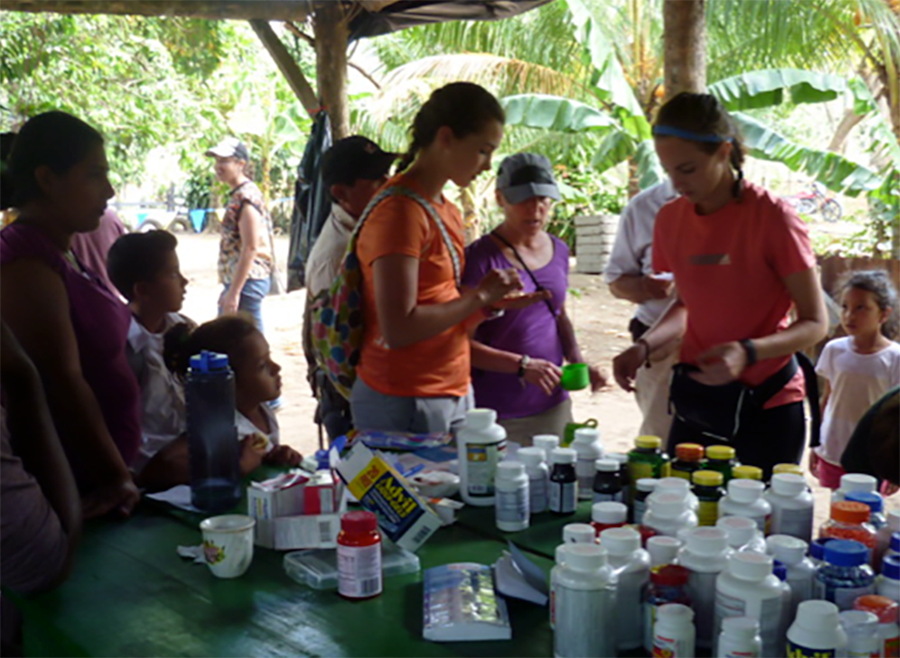



Nicaragua is a Central American country which Taiwan has an official diplomatic relationship with for decades. How much do we know about it? The most famous news might be China’s interest in investing in the Nicaragua Canal project since 2014. Anything else? Fortunately, I participated in Winthrop University’s Service-Learning project in March, 2016, under the leadership of Dr. Ginger Williams of the History Department, learning its history and witnessing the beauty and growth of this country myself.
Nicaragua is an older republic than the Republic of China. It obtained the independence in 1838 and established a republic although Britain and the US maintained their presence or influence throughout most of the 19th and 20th century. In the 1978-1979, the Nicaraguan war led to the overthrow of the Somaza dictatorship. However, the US government trained the Contras, a counterrevolutionary force, to overthrow the new Sandinista government. When Nicaragua finally came out of this Contra War in 1990, more than one tenth of its 3.3 millions population has been displaced. According to the World Bank, the GNI per capita was $310 dollars, i.e. on average each person only earned less than $1 dollar every day. In 2015, the GNI per capita rose to $1,940 dollars and the population grows to 6 millions. Continuing to grow its agro-processing industry, the government also promotes its tourism and encouraging foreign direct investment to develop the auto industry.
Even so, the rural-urban divide kept many distant areas underdeveloped. Starting from 2007, Dr. Williams worked with the communities of Rocha and Tierra Blanca, two war-torn mountainous communities during the 1980s civil war. According to her, the Contra War ravaged these two communities every day so that even years after, the fear is imprinted in their mind. In Rocha many people still prefer to sleep outside of their houses in order to rapidly flee from the bombings. It is thus not an easy job to win their trust. Most people had never encountered any outsiders before Winthrop groups arrived, not to mention any American, but they need education and better nutrition and hygiene to improve their basic living conditions. In both communities, most homes are made of wood with dirt floor; 52% of the homes have running water from a nearby river, and only three homes have electricity powered by solar panels (mostly in Tierra Blanca). In addition, although Nicaragua’s mandatory education is 6 years and the parents have only two and three years of education on average, their children cannot easily receive education because they had been deterred by the high river water from time to time.
Winthrop University thus committed to this multidisciplinary institutional/community partnership in Nicaragua. The student groups built a Winthrop School for Rocha in 2008, inquired their eating habits and gave advices to improve their nutrient absorption, tested E. coli in water, and conducted oral history projects to preserve their past. The Rock Hill community where Winthrop University is located also donated money to purchase water filter barrels and to tap water pipelines from Rocha to the mountain spring. On the Medical Day, as Nutrition students conducted general checkup to provide parents with the information of their children’s physical growth, history students were distributing donated vitamins, clothes, stationary, tooth paste and tooth brushes. One young man had encountered some accident and hurt his arm, but he still established his family and repeatedly brought back his children for the checkups. Trust is truly established between Winthrop and the communities.
Nicaragua’s economy demonstrates all symptoms of a developing country. On the way from the capital city Managua to Matagalpa, the 4th largest city, fields, roadside vendors, and small shops interchangeably appeared along with many auto parts businesses. And Volkswagen was the leading foreign auto company. However, self-sufficient farming and the dairy industry were the pillars in Rocha and Tierra Blanca. Milk and meat remained too expensive for the local people to enjoy. Most milk was carried down to the foot of the mountain for sale. All homes, including the one where we stayed in Tierra Blanca, used stone stoves and burned wood. The Rocha village headman took us further up to the mountain to see the water pipelines they installed in 2015 to have running water. His face was written with pride and excitement.
We were very fortunate compared to the villagers and the pioneering students ten years ago, who encountered storms and flood so that they had to flee in the middle of the night. The house where we stayed in Tierra Blanca just obtained electricity in 2015. We slept on hammocks, some in the porch of a house, some in a storage house. As the temperature dropped from the high 80s in the daytime to the low 60s at night, it was so chilly that we cannot have real sleep. The howler monkeys joined our sleepless nights, squatting on trees and howling only a few feet away from us; then the roosters joined the relay race, crowing, accompanying us until the dawn. This is a great experience to be one with nature. But it only lasted a few days. How many people could truly live like this for a long time?
2017 is the tenth year of this Service-Learning project. We took the road to Nicaragua. But when I looked at Rocha and Tierra Blanca, I stepped on a road leading back to myself, thinking: what do I have? What can I do for others? For me, the road to Nicaragua is actually a journey to exploring our true self.
